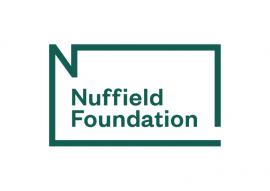Dinosaurs
This list consists of lesson plans, activities and ideas to support the teaching of science through the topic of Dinosaurs. It shows how to link science to the topic, tips on using the resources, suggestions for further use and background subject knowledge to support teachers in delivering the science objectives. Possible misconceptions are highlighted so that teachers may plan lessons to facilitate correct conceptual understanding. Resources support the teaching of animals, including humans and materials, plants and their properties. This enables teachers to choose which aspect of science they would like to teach within the overarching topic.
Visit the primary resources for cross curricular topics webpage to access all resource lists:
https://www.stem.org.uk/cross-curricular-topics-resources
Extinction
This is an older resource, but contains some useful pages that might be used to stimulate discussion. An introduction to dinosaurs (pages 4-5) names and describes a selection of dinosaurs and this selection is added to on pages 8-9. Illustrations on pages 6-7 show how fossils of dinosaur bones are displayed in museums. If your school has a collection of real fossils or a replica set, children might create their own 'museum', complete with labels and even a guide book!
Watch out for the Natural History Museum's Dippy the Diplodocus as he is about to embark on a tour of the country. Bringing a famous dinosaur within easy travel distance for numerous children may well add extra spice to many a dinosaur topic!
Biology Changing the World
Aimed at older primary, this collection of resources links to the topics of rocks and soils, evolution, identification and classification. Designed around the Biology Changing the World project it provides information on the life and work of three great biologists: Mary Anning, C B Williams and Beatrix Potter providing insight into their impact on science.
The Rocks and Soils resource, first on the list, provides an example of a simple 'how a fossil is made' sequence. What we know about dinosaurs is based entirely on the study of their remains. Some distant relations of the dinosaurs still exist, but it is from fossils that we discover much of what we know about the huge variety of life that existed at the time of the dinosaurs. For younger learners introduce this in very simple terms. Children might model their own 'fossil' formation process using basic food ingredients. Use fresh sliced bread, a mixture of white and brown, with crusts cut off. Jelly sweets (some are even shaped like sea creatures and worms!) are 'fossilised', trapped in-between 'sedimentary' layers of bread. Wrap the sandwiched bread and sweets in plastic film, place a board on top and compress under a weight (or stack of books, safely positioned). Children observe what happens over time and ultimately break open the stack to reveal what remains of the sugary sweets.
Fossils
This activity helps to show how fossils provide information about living things that inhabited the Earth in the past. It includes a short video, which explains what fossils are and how they are formed and shows how to make a replica fossil using dinosaur footprints and Plaster of Paris.
A follow on activity shows how to create a model of rock layers with fossils in them using different coloured jelly. Layers can be added each day in the classroom to give children a clearer picture of the fossilisation process. It also helps to show how the age of the rock relates to the age of the fossil you find in the rock, the fossils found at the bottom being older than the fossils found in the layers at the top.
Introduction and Guide to Teaching Primary Science
This resource is certainly a blast from the past, but it still includes lots of worthy ideas! A chapter on dinosaurs, beginning on page 38 (and perhaps worth reading if you have the time) makes an important point. With very young children, we must make their experience of dinosaurs as concrete as possible. Difficult for sure, but not impossible. Use infomation about dinosaur scale and measure out their approximate size / length in non-standard or standard units on the playground. Make comparisons: Was a Diplodocus the height of a house or a bus? Was a Coelyphilis larger or smaller than a cow? Create and use models to set the scene and 'play-act' dinosaur interactions. Encourage children to move like a Tyrannosaurus or Brontosaurus. How are these dinosaurs' movements similar and different? Which dinosaurs move quickly and which move more slowly?
What on Earth?
This pack contains a range of different activities based on the theme of ‘Earth’. The activities cover a mixture of topics including: weather, gravity, plants, fossils, energy and soil. The relevance to dinosaurs lies in the last activity (pages 19-20) where children piece together a set of Iguanadon 'bones'.
Natural History Museum - Dino-directory
From slow, plant-eating giants to fierce scavengers and hunters, dinosaurs dominated the land for over 160 million years. This database on the Natural History Museum website provides a vast amount of ready-to-use background information about a vast range of dinosaurs. Try beginning with the Dino Top 5 - Stegosaurus, Tyrannosaurus, Diplodocus, Coelyphylis and Tryceratops. What did they look like? How big (or small) were they? Where might they have lived? What did they eat? Who might eat them? Children might choose their favourite type of dinosaur, find out all they can and then create a model, poster and/or Who am I? riddle, using the facts that they have learned.
Jurassic Coast learning resources
Much evidence of dinosaur activity in Britain originates from the Jurassic Coast in Dorset. This website provides plenty of information, but also includes at least one fun activity you might adapt for use with children.
Palaeontologists over centuries have collected evidence of dinosaurs from rocks and beaches, sometimes discovering fossilised remains, sometimes finding other traces - the stories of what happened between dinosaurs - in the form of footprints. Dinosaur footprint trackways show us evidence of where dinosaurs used to travel and how they used to live. In 'Dinosaur Footprint Mystery', children use their imagination to create a series of dinosaur footprint trackways to tell the story of a gruesome dinosaur fight!
Mary Anning's story - cartoon
Mary Anning is famous for being a largely self-taught fossil hunter. She was born in Victorian times and grew up on the Jurassic coast in Dorset, where she hunted for and sold fossils to support her family after her father died.
This cartoon tells her story in some detail, but you might select the parts of the story most useful in setting the scene for a fossil hunt. At KS1, keep it simple. Bury some stale and some fresh choc-chip cookies in a large sand tray. Provide a selection of tools that the children might use to help them retrieve a 'rock' from the 'beach'. Back at their workshop benches children painstakingly remove the 'fossils' (choc-chips) from their chosen 'rock', using tools such as lolly sticks or cocktail sticks and paintbrushes to remove traces of biscuit from each fossilised remain. Discuss: Did each rock contain the same number of fossils? Were some of the rocks easier to work with than others? What could those fossils be? How did Mary Anning collect and clean the fossils she collected?
ARKive School Museum
This is a lovely cross-curricular activity, which can be linked to how dinosaurs became extinct. Many animals are in danger of becoming extinct for different reasons to the dinosaurs, but this in itself could provide fruit for an interesting classroom discussion. Children learn about endangered species by creating there own interactive museum. Children could draw pictures of animals or bring in soft toys to represent endangered animals, finding out about what they eat, how many offspring they have, what kind of habitat they live in nad why they might be in danger of becoming extinct. Lots of this will link into work on life-cycles in the later years of primary education. They can invite parents and carers in to come and learn more about endangered animals, being guides showing them around exhibits in their museum. This activity provides lots of opportunities for teamwork, communication, problem-solving, creative-thinking.
I am a Paleontologist- song
This extremely catchy song is a lovely way to get children excited about the work of a paleontologist and what they do. It could lead to practical work on many of the activities above, or children role-play paleontologists discovering fossils in a dance/drama activity. Be warned, this will be a difficult one to stop singing!





